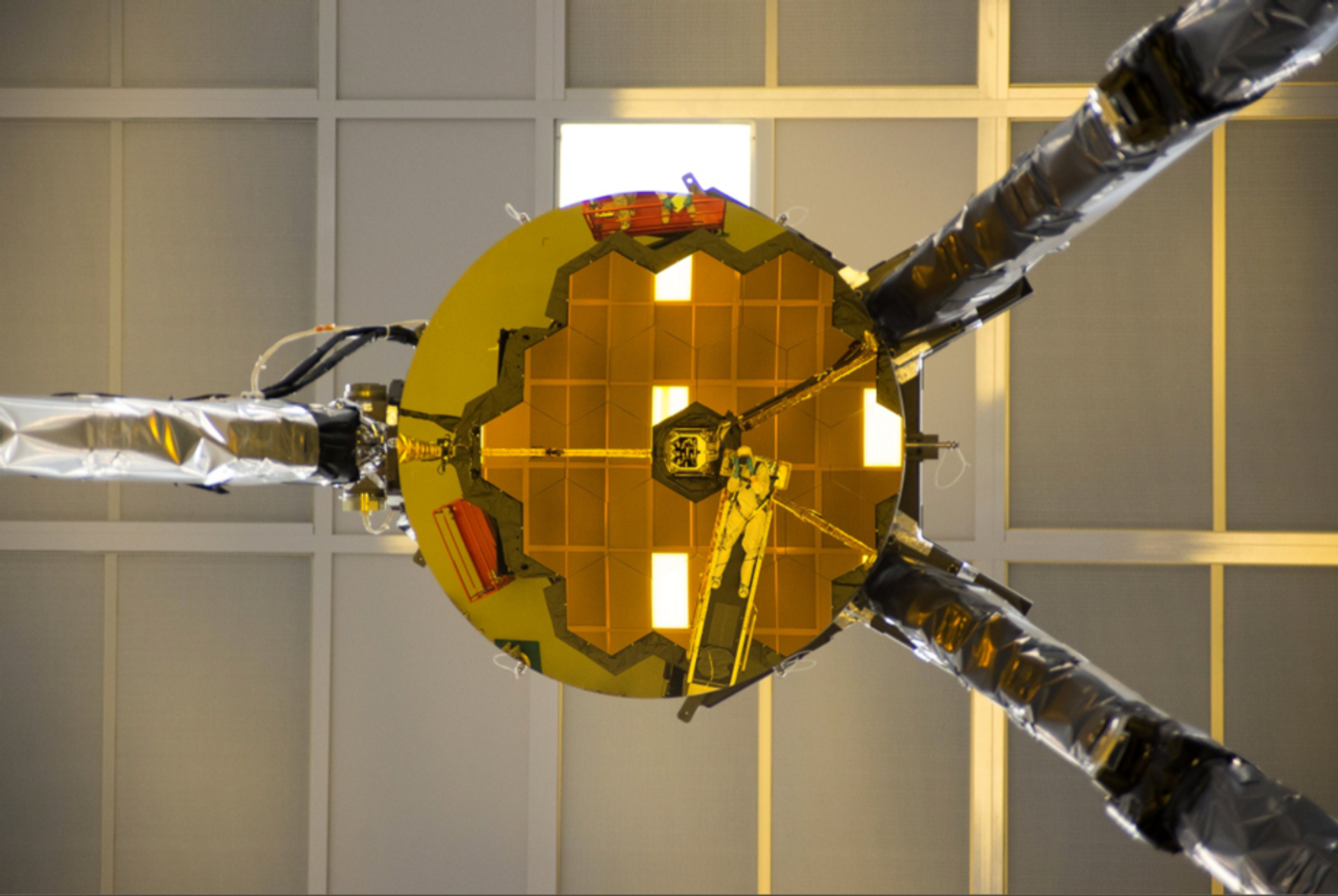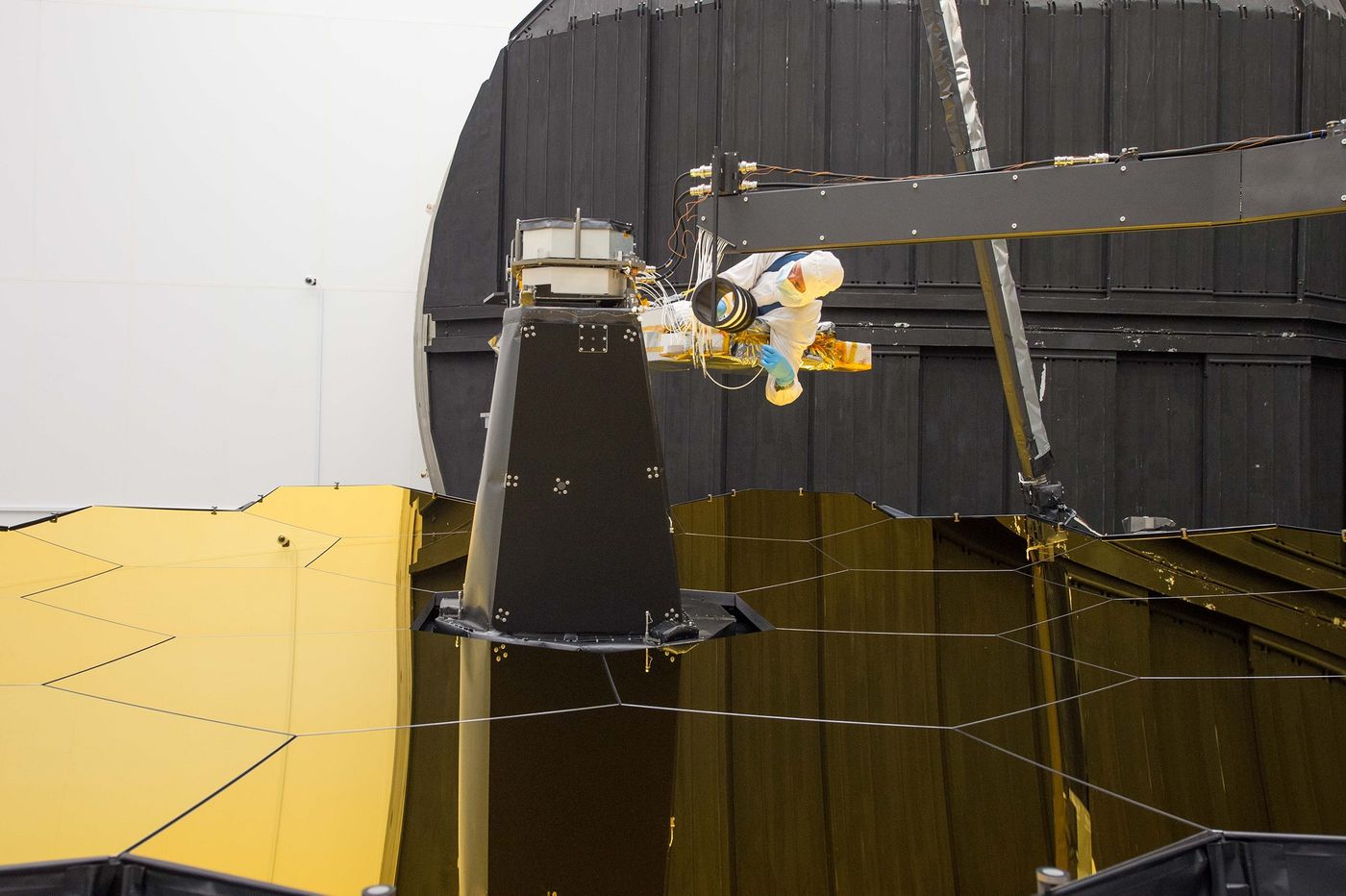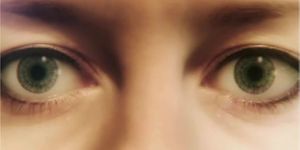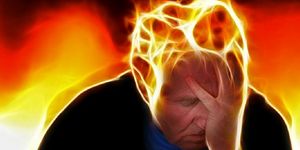NASA Tests the James Webb Space Telescope's Line of Sight
NASA’s James Webb Space Telescope (JWST) is set to succeed the Hubble Space Telescope by Spring of 2019. But before it can launch into space, it needs to undergo ground-based testing to ensure everything works correctly.
Image Credit: Ball Aerospace via NASA
The JWST currently resides inside of NASA’s historic Chamber A in Houston, Texas. Inside, it undergoes frigid temperature tests to ensure that it can endure space-like conditions. NASA also takes advantage of the situation by performing other tests in the chamber.
Not long ago, NASA moved forward with a ground-based optical alignment test. It involved angling all the individual primary mirror fragments just right so that they would reflect incoming light into the JWST’s sensors adequately.
Related: The primary mirror of the James Webb Space Telescope is now complete
But tests didn’t end there; one merely led to another. After aligning the primary mirror fragments, NASA commissioned a piece of calibration equipment dubbed the AOS Source Plate Assembly (ASPA). It bolts to the primary mirror’s center and shines various laser wavelengths down the JWST’s optical system to ensure everything points where it needs to.
Image Credit: NASA/Desiree Stover
As NASA puts it, these laser lights behave a lot like the different light sources that will emanate from distant stars when JWST takes its first glance at the cosmos. It works a lot like this:
“Intricate equipment is required to test an instrument as complex as the Webb telescope. The ASPA allowed us to directly test key alignments to ensure the telescope is working as we expect, but its location meant we had to have a person install over 100 fiber optic cables by hand over the primary mirror,” said Allison Barto, Webb telescope program manager at Ball Aerospace.
“This challenging task, which Larkin rehearsed many times to ensure it could be performed safely, also offered the opportunity to check the alignments by taking this ‘selfie’ prior to entering the test.”
Related: When one eye in the sky isn't enough...
As it would seem from the testing, the automated mirror alignment system operated as anticipated, and the light reflected as expected. Fortunately, this means the mirror alignment system should work correctly in outer space when the JWST gets launched in 2019.
Notably, ASPA is a ground-based alignment-checking mechanism and won't be fastened to the James Webb Space Telescope when it launches. Once assembly of the JWST is complete and NASA finalizes a few additional tests, it will be ready to explore the cosmos.
It should be intriguing to see how the JWST will revolutionize space exploration. With all the time and effort going into the project, one can only hope that it will help humanity learn something new about the universe.
Source: NASA










